 Hils Everitt – Editor at Large
Hils Everitt – Editor at Large
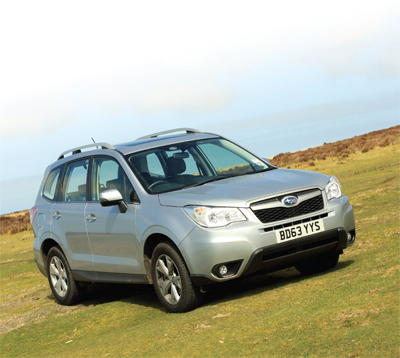
It’s not often I get to ride in the back seat of a car as a passenger. I do often sit in the privileged position of co-pilot and, in our long-term Subaru Forester; it is a reasonably comfortable ride. This is an SUV that hugs the bends quite well, considering its somewhat ungainly stance as a 4×4, and you don’t feel too much wallowing or juggling around.
The same cannot quite be said of riding in the back seat, however. It is billed as a five-seater, but there isn’t really enough comfort room in the back for three adults. On a recent journey to a birthday party, I was sitting with two average-sized ladies in the back, and by that I mean not overweight nor excessively tall. I was in the middle, naturally, as I have very short legs and the transmission tunnel isn’t so much of an issue for me, although there is not a lot of room as the invasive centre console bulges back into the rear. At five feet tall and a size 8, I am petite: basically, the size of a 13-year-old child, according to some clothing manufacturers. Yet, even with two slim friends, we were still a little bit cramped in the back. I could easily have got my Jeep Grand Cherokee out of the garage to give us all abundant luxurious space in the back, but I wanted to test the Forester’s credentials. Luckily, it was a late afternoon garden party, so none of us was clad in slinky and vulnerable-to-creases silk cocktail dresses. If we had been, the Jeep would have been essential.
 We are always a little wary of fuel treatment potions. If these things all ‘worked’ then wouldn’t we all be using them? For vehicles with older engines, however, it is certainly the case that today’s modern emission regulations can be difficult to achieve when the time comes for the MOT. It may make sense, therefore, to at least try these new Magic Bullet options available from Euro Car Parts as they are aimed at reducing emissions. The range also includes two options to clean catalytic convertors for both diesel and petrol engine vehicles.
We are always a little wary of fuel treatment potions. If these things all ‘worked’ then wouldn’t we all be using them? For vehicles with older engines, however, it is certainly the case that today’s modern emission regulations can be difficult to achieve when the time comes for the MOT. It may make sense, therefore, to at least try these new Magic Bullet options available from Euro Car Parts as they are aimed at reducing emissions. The range also includes two options to clean catalytic convertors for both diesel and petrol engine vehicles. 
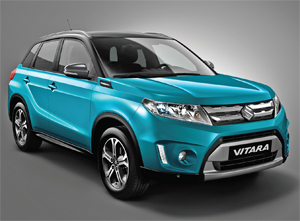 Suzuki’s Vitara was unveiled some 25 years ago, and it’s fair to say that it was one of the most significant modern 4x4s ever built. It very cleverly appealed to a completely new group of enthusiats and created a vehicle for the then named ‘leisure market’. Looking back today, it is certainly a very idiosyncratic design; slab sided, with a huge flat front windscreen. Times change and it ceased production, with only the larger Grand Vitara SUV remaining. At this month’s Paris Motor Show, the Vitara returns to the Suzuki range. Based on the iV-4 concept, the Vitara will be available in the UK in the spring of 2015, fitted with the company’s ALLGRIP intelligent four-wheel drive system and the range will include both diesel and petrol engines. Customers will be able to personalise their own Vitaras by choosing different colour and trim options. We will have more details on the new Vitara in next month’s issue.
Suzuki’s Vitara was unveiled some 25 years ago, and it’s fair to say that it was one of the most significant modern 4x4s ever built. It very cleverly appealed to a completely new group of enthusiats and created a vehicle for the then named ‘leisure market’. Looking back today, it is certainly a very idiosyncratic design; slab sided, with a huge flat front windscreen. Times change and it ceased production, with only the larger Grand Vitara SUV remaining. At this month’s Paris Motor Show, the Vitara returns to the Suzuki range. Based on the iV-4 concept, the Vitara will be available in the UK in the spring of 2015, fitted with the company’s ALLGRIP intelligent four-wheel drive system and the range will include both diesel and petrol engines. Customers will be able to personalise their own Vitaras by choosing different colour and trim options. We will have more details on the new Vitara in next month’s issue.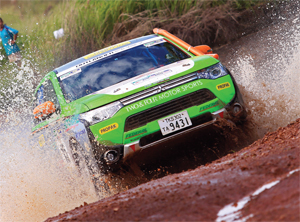 Mitsubishi’s Outlander PHEV completed the recent Asia Cross Country Rally, finishing first in class and a creditable 14th overall. The Rally was used by Mitsubishi as a platform to confirm the hybrid vehicle’s reliability in difficult conditions. The PHEV is modified for competition use with the drive battery mounted higher to allow for better ground clearance, and it gets competition spec suspension. Add underbody suspension, a snorkel and the rest is left very much ‘standard’. We have a feature on the PHEV, matched against the company’s first Jeep on page 46 of the November 2014 issue – buy it
Mitsubishi’s Outlander PHEV completed the recent Asia Cross Country Rally, finishing first in class and a creditable 14th overall. The Rally was used by Mitsubishi as a platform to confirm the hybrid vehicle’s reliability in difficult conditions. The PHEV is modified for competition use with the drive battery mounted higher to allow for better ground clearance, and it gets competition spec suspension. Add underbody suspension, a snorkel and the rest is left very much ‘standard’. We have a feature on the PHEV, matched against the company’s first Jeep on page 46 of the November 2014 issue – buy it  This new awning from Rhino-Jack, the Foxwing Eco 2.1 is ideal for small and medium SUVs. It is simple to mount and then swings out from the rear and side of your vehicle, offering no less than 270degs of shade. Given that it was originally designed for Australia, that makes a lot of sense, for those of us living in the soggy UK, you’ll be pleased to know that it is also waterproof so works well to allow you to sit outside when the weather turns. Made from lightweight polyester, with a UV protective polyutherene coating, the extension poles are anodised aluminium and therefore rustproof. Rhino-Jack has a great range of off-road accessories and all are available from the guys at TBR Accessories, so give them a call on 0800 169 9946 / 01832 275396 or check out the website for more details.
This new awning from Rhino-Jack, the Foxwing Eco 2.1 is ideal for small and medium SUVs. It is simple to mount and then swings out from the rear and side of your vehicle, offering no less than 270degs of shade. Given that it was originally designed for Australia, that makes a lot of sense, for those of us living in the soggy UK, you’ll be pleased to know that it is also waterproof so works well to allow you to sit outside when the weather turns. Made from lightweight polyester, with a UV protective polyutherene coating, the extension poles are anodised aluminium and therefore rustproof. Rhino-Jack has a great range of off-road accessories and all are available from the guys at TBR Accessories, so give them a call on 0800 169 9946 / 01832 275396 or check out the website for more details.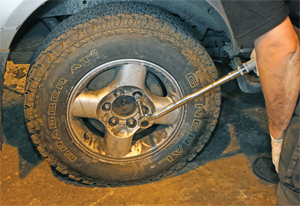
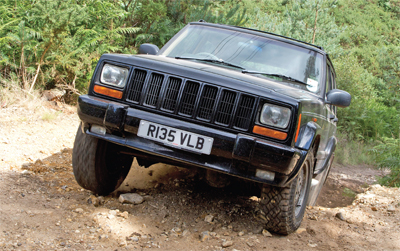
 Hils Everitt – Editor at Large
Hils Everitt – Editor at Large
 Nigel Fryatt – editor
Nigel Fryatt – editor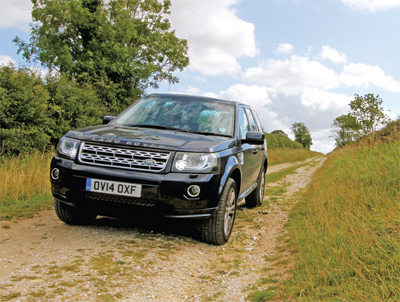 There it was, ahead of us. As the Freelander eased forward, at a relaxed snail-paced crawl, up the slight incline it was obvious where we were as ahead was the famous Big Sky that you find in Norfolk. There was a brisk northerly wind (something else you get in this part of Norfolk), but the sky was a pale blue, the sun was shining and we were driving one of the oldest known transport routes in the UK. It struck me then, that this is what 4×4 ownership was all about. In this weather, the route was simple, the Freelander’s wheels occasionally scrabbling on the loose chalk and flint surface in some of the ruts, but that wasn’t the point. It wasn’t technical off-roading, it was getting-away-from-it-all off-roading along a section of Peddars Way, in north Norfolk and all was well with the world.
There it was, ahead of us. As the Freelander eased forward, at a relaxed snail-paced crawl, up the slight incline it was obvious where we were as ahead was the famous Big Sky that you find in Norfolk. There was a brisk northerly wind (something else you get in this part of Norfolk), but the sky was a pale blue, the sun was shining and we were driving one of the oldest known transport routes in the UK. It struck me then, that this is what 4×4 ownership was all about. In this weather, the route was simple, the Freelander’s wheels occasionally scrabbling on the loose chalk and flint surface in some of the ruts, but that wasn’t the point. It wasn’t technical off-roading, it was getting-away-from-it-all off-roading along a section of Peddars Way, in north Norfolk and all was well with the world. Impressive developments in hybrid and diesel drivetrains mean that CO2 outputs are falling year on year, writes Phil Weeden. What do you do, however, if you produce only SUVs and don’t have super-green city cars to offset some of the heavier, thirstier cars in your range? That’s the challenge at Jaguar Land Rover, which has recently revealed more info of its all-new Ingenium family of engines. The new units will be built from 2015 in the company’s new £500 million manufacturing centre near Wolverhampton (pictured above).
Impressive developments in hybrid and diesel drivetrains mean that CO2 outputs are falling year on year, writes Phil Weeden. What do you do, however, if you produce only SUVs and don’t have super-green city cars to offset some of the heavier, thirstier cars in your range? That’s the challenge at Jaguar Land Rover, which has recently revealed more info of its all-new Ingenium family of engines. The new units will be built from 2015 in the company’s new £500 million manufacturing centre near Wolverhampton (pictured above).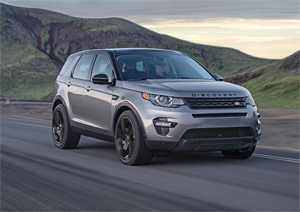 The first Discovery was unveiled some 25 years ago. This new version is a very different beast, and the start of a whole new family of vehicles.
The first Discovery was unveiled some 25 years ago. This new version is a very different beast, and the start of a whole new family of vehicles.